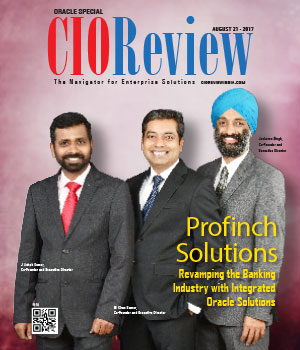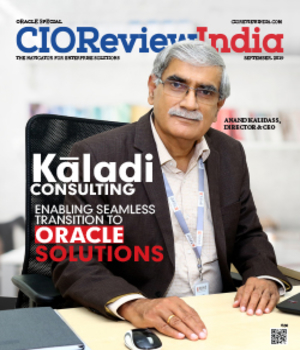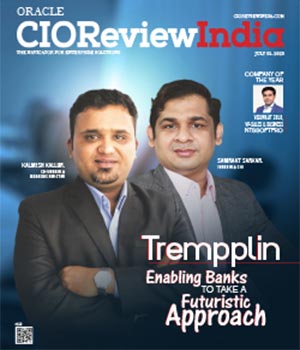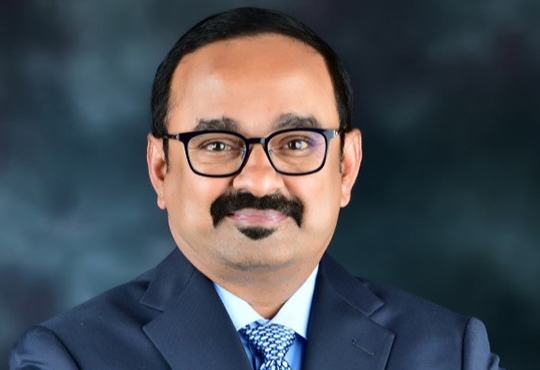
Utilities: Shifting from the 'Customer Account' to the 'Customer Experience'
Tilak Subrahmanian, VP, Energy Efficiency, Eversource Energy

Over the last century, the utility industry has become increasingly more effective at providing reliable, affordable energy to residents and businesses. The industry is now at a crossroad, driven by the push for de-carbonization, new technologies, and customer desire for more information and options regarding energy use.
With many more demands being placed on the grid, delivering reliable and affordable energy entails a new level of complexity. What’s more, we are increasingly being asked to provide “behind the meter” services to help customers optimize their energy use.
Innovating from the Outside
Regulators and policymakers in New England advocate for energy efficiency as the first fuel. To that end, Eversource invests over $500 million a year to help customers reduce their energy footprint. Over the last three years, we have saved the electricity equivalent of a 500 megawatt power plant, at a comparable cost of only three cents per kilowatt-hour.
Today, Greater Boston is in an unprecedented building boom. The Energy Use Intensity measure of the typical new building is less than half that of similar structures constructed just 10 years ago. These are quantum changes that have reshaped the regional energy ecosystem.
To achieve these dramatic results, Eversource invested in developing a deep understanding of how our customers use energy, what it means to them, their investment criteria and so on. Among our commercial and industrial customers, 2 percent account for 80 percent of total energy use. In contrast, 80 percent of our C&I customers account for only 6 percent of energy use.
Given these statistics, it is clear that how we engage our largest customers must be different from how we engage smaller ones. The opportunity for smaller “micro business” customers to reduce energy consumption is different from that of large customers. Their financial considerations and ability to invest in energy efficiency are different, as is their ability to follow projects through to completion.
Our segmentation efforts not only break down customers by size, but also by sector and building use type. For example, financial return considerations for customers in higher education, commercial real estate, life science/biotech or government/municipalities are each starkly different. Our customer engagement strategy, along with the offerings and financing tools we make available, are tightly correlated with our understanding of customers at a nuanced level. We are thus making the transition from a “programmatic” view to a customer-centric approach.
The housing stock in New England is among the oldest in the country. Roughly, 96 percent of single-family homes in Boston were built before insulation was required by code. It makes little sense to have the same offerings for homes built in 1801 as those built in 2001 (insulation was required by code starting in the 1970s).
It is equally imperative that we understand the motivations behind what leads homeowners to invest in energy efficiency. For example, is it about reducing costs, being “green”, and/or increasing warmth during the cold winter months?
To accomplish this, we consider our customers based on their opportunity to make changes to their energy use and their propensity or willingness to do so. These techniques have long-been used with consumer products and in other industries. To apply these to the energy field, we have invested in our own organization, bringing in talent from other industries to complement our deep industry expertise. The pedigree of our team today is necessarily very different from what it was six years ago.
We have also invested in technology to scale these efforts across our 3.6 million customers. The Customer Engagement Platform we began rolling out earlier this year allows us to do just that. We think of it as having three essential components:
• Analytics: Sophisticated “big data” analytics using our internal data and external sources (e.g. firmographic and demographic information)
• Outbound: Targeted outreach based on our messaging and the analytics
• Inbound: To provide our customers information, insights and a compelling experience
The Customer Engagement Platform
The business premise behind CEP was to drive deeper engagement with our customers across all segments—C&I and residential. We want to leverage technology to complement high-touch, one-on-one contact through our own account executives and/or channel partners.
The platform consists of six tools, with three customer-facing and three internally facing. The three customer-facing products are each targeted to a distinct customer segment: residential, small business and large business. All three products allow our customers to monitor their usage and view our records of their past participation in energy-efficiency measures. Customers can also view and correct our information about their homes and businesses.
In addition, residential and small-business customers can build and track their own energy-savings plans through the tool. A recommendations engine also provides additional targeted suggestions for these two customer groups. Large business customers can make comparisons across their own portfolio of assets to see where their best opportunities for savings might be. All customers have access to benchmarking tools and we continue to build-out the ability for additional industry benchmarking.
The three internally facing tools are a customer service portal, business analytics tool and email marketing tool
• The customer service portal helps our customer service representatives to answer residential and small-business customers’ questions or concerns about high bills and to provide specific suggestions. The reps can also point the customers to the CEP for further action
• The business analytics tool allows us to leverage information customers provide in their profiles, as well as data from our internal systems, to help us better understand our customers and how we might better serve their needs
• The email-marketing tool integrates with the analysis tool to provide an avenue to message targeted customer segments in ways that will best resonate with them
We worked with C3 IOT as the vendor on this deployment. Not surprisingly, one of the biggest challenges was to pull data out of our own multiple legacy systems and place the data into a model/framework where we could also pull-in data from channel partners and other third parties (e.g. Experian). This Customer Group Data Warehouse is the primary source for pushing data to C3 IOT’s SaaS platform.
Lessons Learned
Three final recommendations, based on Eversource’s experience:
• The task of mapping meters to customers, segments, and sub-segments is significant. You need clarity on how you intend to use this information.
• You can put in all the technology you want, but it is important to remember it is just the plumbing. You need to have a commitment from the organization—IT and business—to do something with the data and information to drive business value.
• Be clear up-front about what business outcomes you are looking to drive with this investment and how you would measure success.
CIO Viewpoint
Why Foolproof Facial Recognition Is Key Against...
By Joseph Sudheer Thumma, Global CEO & MD, Magellanic Cloud
National Technology Day 2025: Powering Progress...
By CIOTech Outlook Team
Aligning IT Roadmap with Business Objectives: A...
By Subhash singh Punjabi, CISO & Head Enterprise Architecture, Deepak Fertilisers & Petrochemicals Corporation Ltd
CXO Insights
Modernizing Enterprise Database Infrastructure...
By Ashish Ray, VP, Mission-Critical Database Technologies, Oracle
Enhanced Database Technology in Business...
By Srikanth Doranadula, Group Vice President-Technology and Systems, Oracle India
ISVs driving the dream of a tech-first world in...









